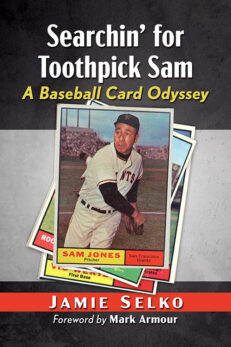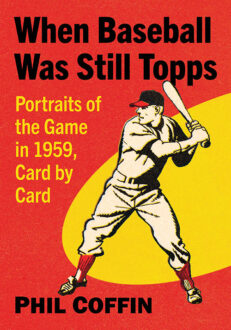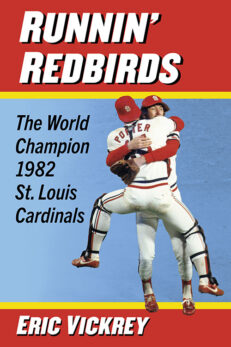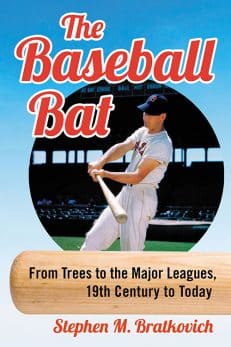The Baseball Bat
From Trees to the Major Leagues, 19th Century to Today
$9.99
In stock
About the Book
Why do modern-day sluggers like Aaron Judge prefer maple bats over the traditional ash bats swung by Ted Williams and others? Why did the surge of broken bats in the early 21st century create a crisis for Major League Baseball and what steps were taken to address the issue? Are different woods being considered by players and manufacturers? Do insects, disease and climate change pose a problem long-term? These and other questions are answered in this exhaustive examination of the history and future of wooden bats, written for both lifelong baseball fans and curious newcomers.
About the Author(s)
Bibliographic Details
Stephen M. Bratkovich
Format: softcover (6 x 9)
Pages: 205
Bibliographic Info: 41 photos, appendix, notes, bibliography, index
Copyright Date: 2020
pISBN: 978-1-4766-7928-0
eISBN: 978-1-4766-3853-9
Imprint: McFarland
Table of Contents
Acknowledgments v
Introduction 1
1. Major League Origins 5
2. The Bats—They Keep Changing! 14
3. Bat Makers Up to World War II 32
4. Bat Makers from World War II to Boutique 44
5. Wood Properties and Features and Their Relationship to Bats 58
6. Bat Breakage 72
7. U.S. Forests 85
8. Killer Pests 100
9. Tree to Billet 109
10. Billet to Bat 124
11. The Future of the Bat in Major League Baseball 141
Appendix: Pine Tar and Rosin 153
Chapter Notes 163
Bibliography 181
Index 191
Book Reviews & Awards
• Winner, SABR Baseball Research Award
• “A good book on an essential piece of equipment.”—SABR Deadball Era Committee Newsletter
• “Written in a clear, memorable style that includes a generous number of engaging stories…Bratkovich uses his scientific background regarding forestry and wood products to acquaint the reader with the detailed history of an essential component of ‘America’s pastime’.”—Wood and Fiber Science





